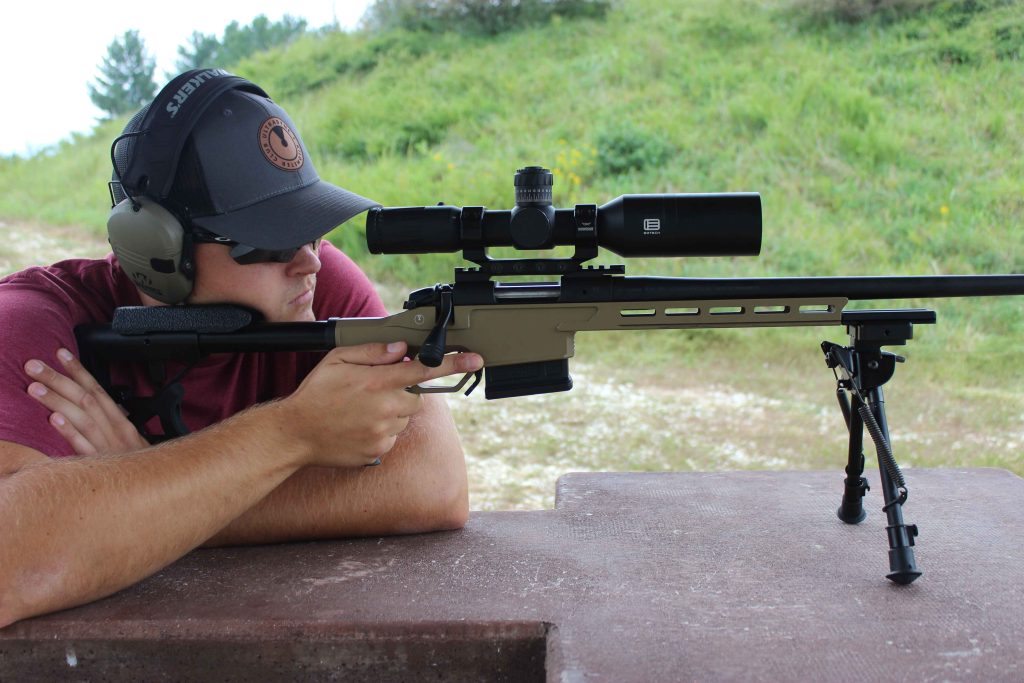Adjustable Stocks vs Fixed Stocks

One crucial component that often sparks debates among firearm enthusiasts is the choice between adjustable and fixed stocks. The stock of a rifle plays a pivotal role in determining accuracy, comfort, and overall shooting experience. In this article, we’ll dig into the world of adjustable and fixed stocks, exploring the advantages and disadvantages of each to help you make an informed decision before choosing your next stock.
The Basics of Rifle Stocks
Before we dive into the adjustable versus fixed debate, let’s briefly touch on what we are referring to as the “stock” in this article. The stock serves as the connection point between the shooter and the firearm, and is commonly referred to as the “buttstock”. This specific article will not be covering the actual body of the rifle stock. Stocks come in various materials, shapes, and designs, but their primary functions are to absorb recoil, enhance control, and contribute to accurate shot placement.
Fixed Stocks: Stability and Simplicity
Fixed stocks have been a staple in the firearm industry for decades, valued for their simplicity and reliability. These stocks come in one solid piece and do not have adjustable components, providing a consistent length of pull (LOP) for the shooter. The LOP is the distance from the trigger to the end of the stock, and in fixed stocks, it remains constant.
One of the key advantages of fixed stocks is their stability. Without moving parts or adjustments, these stocks are known for their robust construction, making them less prone to malfunctions or breakages. This stability can be particularly beneficial for situations where a quick, repeatable shot is crucial.
Fixed stocks are also preferred by some shooters for their straightforward design. Beginners often find fixed stocks easier to use, as there are fewer variables to consider. Additionally, fixed stocks can be more budget-friendly compared to their adjustable counterparts.

Adjustable Stocks: Ultimate Customization
Adjustable stocks, on the other hand, provide shooters with the flexibility to customize their rifle to suit their individual preferences. These stocks typically feature adjustable components such as the length of pull, cheek risers, and even the butt plate angle. The ability to make these adjustments can be a game-changer for shooters who prioritize comfort and want a personalized shooting experience.
One significant advantage of adjustable stocks is their adaptability to adapt to different body types and shooting styles. Individuals with varying arm lengths, body sizes, or shooting positions can fine-tune the stock to achieve optimal comfort and control. This is especially important for those engaged in competitive shooting or spending extended periods at the range.
Another notable benefit of adjustable stocks is their versatility across different shooting scenarios. Whether you’re shooting prone, kneeling, or from a standing position, an adjustable stock allows you to quickly and easily modify your rifle to match the demands of the situation. This adaptability can be particularly advantageous in dynamic shooting disciplines or hunting environments.
Ultradyne’s Adjustable Buttstock Review
Factors to Consider
As you weigh the pros and cons of adjustable and fixed stocks, several factors should influence your decision:
- Intended Use: Consider the primary purpose of your rifle. If you’re focusing on repeatability, and won’t ever need to adjust to a different position or switch users, a fixed stock may provide the stability you need. For dynamic shooting situations or hunting, an adjustable stock’s flexibility could be more advantageous.
- Comfort and Ergonomics: Pay attention to how comfortable and ergonomic each type of stock feels for you. Everyone’s body is different, and what works for one shooter may not work for another. Trying out different stocks and making adjustments to an adjustable stock can help you find the perfect fit.
- Budget: Evaluate your budget constraints. Adjustable stocks often come with a higher price tag due to their additional features. If you’re on a tight budget, a well-constructed fixed stock might be a more cost-effective solution.
- Weight: Consider the weight implications. Adjustable stocks may have more components, potentially adding weight to your rifle. If weight is a critical factor for your shooting activities, this could influence your decision.

Conclusion
In the debate between adjustable and fixed stocks for rifle shooting, there is no one-size-fits-all answer. The right choice depends on your individual preferences, shooting style, and intended use for the rifle. Fixed stocks offer simplicity, stability, and cost-effectiveness, while adjustable stocks provide a tailored and versatile shooting experience.
Ultimately, the best stock for you is the one that feels comfortable, enhances your shooting performance, and aligns with your specific needs. Take the time to experiment with different stocks, make adjustments, and consider the factors mentioned above to find the perfect balance between stability and customization in your rifle shooting journey.

Great breakdown! Your article on adjustable stocks versus fixed stocks provided a comprehensive comparison that’s invaluable for anyone navigating the world of firearms. The clarity of your explanations and the depth of your analysis really help readers make informed decisions. Thanks for shedding light on this important aspect of firearm customization!